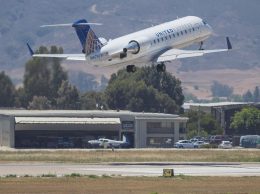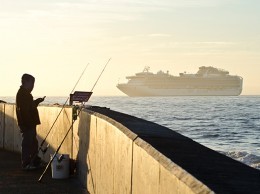
An artist’s rendering shows what the Rosewood Miramar Beachfront Resort will look like when it opens in 2019.
With tourism largely rebounding in the aftermath of the winter’s disasters, Visit Santa Barbara unveiled a new branding campaign on Oct 30, along with optimistic lodging forecasts.
Data from CBRE Hotels showed an increase in demand for lodging, even as Santa Barbara County absorbed a 6 percent increase in available rooms as new venues like the Hotel Californian and Hilton Garden Inn and additional capacity at the Harbor View Inn came online.
The trend is expected to continue in 2019 with high profile new openings like the Hyatt Place on Upper State Street and the Rosewood Miramar Beachfront Resort, as well as reopenings for the Four Seasons Resort The Biltmore Santa Barbara and San Ysidro Ranch, which were damaged in the January mudslides, said CBRE Managing Director Bruce Baltin.
Baltin and other experts spoke at Visit Santa Barbara’s annual fall Tourism Outlook event, hosted at the recently rebranded Hilton Santa Barbara Beachfront Resort on Oct. 30.
“The growth in occupied hotel rooms is not just a sign of the strength of our brand, but it’s the critical lifeline for the attraction, retail and restaurant sectors,” said Visit Santa Barbara CEO Kathy Janega-Dykes.
Baltin predicted an 8.1 percent increase in occupied rooms and a 6 percent hike in average daily rates for 2019. But the forecast follows a “frustrating” year for hotel revenues, Janega Dykes said, making the Santa Barbara data “a tale of two cities” — one where travel volume is growing, but returns are stagnant.
Disasters scared off about a third of travelers at first, according to surveys by Destination Analysts, but that figure dropped by half after about three months, said Dave Bratton, owner of market research firm Destination Analysts, similar in trajectory to wildfires in Northern California, the Las Vegas shooting or the mudslides in Big Sur.
Reduced rates for evacuees and first responders and later promotional rates to encourage visitors to return kept prices low for the first half of 2018. With prices depressed in 2018, Baltin said revenues could shoot up 7.5 percent for 2019, on a 6 percent increase in average daily rates.
The South Coast has strong “aspirational appeal,” said Bratton. For every person that visited, nearly two said they were thinking about making a trip, and that figure is on the rise.
But the firm also found that many people were not familiar with the region, what Bratton described as a “deficit of understanding.”
“People don’t know a lot about you, whether you’re San Francisco, or Los Angeles or here,” he said. “We live in a tunnel-vision world.”
Markets are also showing some “megatrends” that could shift the target demographics for the region, said Don Skeoch, chief marketing officer for the Los Angeles Tourism & Convention Board.
International long-haul travel has exploded around the globe, up 44 percent since 2010, but the U.S. hasn’t been able to capitalize on the trend. Bratton put it down to economics.
“We’re really expensive,” he said. “America has become a high-price place to visit.”
International travelers stay longer and spend more three-to-one compared to domestic visitors, Skeoch said, but a flattening economic cycle could also bring the region down from recent all-time highs.
Outbound travelers were only 10 percent of China’s population in 2018, and a large portion of them were short-haul trips to nearby Asian countries, making them still a largely underpenetrated market for the West Coast, one that is particularly sensitive to changing political relationships.
Set to overtake China as the largest world population, India also represents a potential new target region, Skeoch said.
“We’re trying to tease out how to approach the India market,” he said. “We just know we have to be there.”
The average age in India skews very young, he said, and 87 percent of travelers from China were millennials. Domestically, millennials traveled more often, further and spent a disproportionate amount on trips. Another major shift — they tended to travel solo or bring their kids along, preferring cities and beach destinations.
Skeoch also pointed to a blurring between business and leisure travel.
“More and more employees are taking control of their travel,” even if it doesn’t line up with corporate travel policies, paying extra to upgrade their hotels or stay extra nights.
Altogether, the marketing campaign aimed at “really inspiring visitors to live out the Santa Barbara lifestyle while they’re here,” said Paul Whitbeck, managing director for marketing and advertising agency Greenhaus, hired by Visit Santa Barbara to create the campaign.
The ads highlight local entrepreneurs and “makers,” from winemakers to artists, as well as the region’s geography and mixture of architecture from modern to historical.
“As a vacation destination, Santa Barbara really reflected the quintessentially Californian experience, both in its attitude, its atmosphere, the notion of laid-back luxury, actually going beyond luxury as it’s traditionally seen and experiencing a destination on your own terms,” Whitbeck said.
• Contact Marissa Nall at mnall@pacbiztimes.com.






 Print
Print Email
Email
















